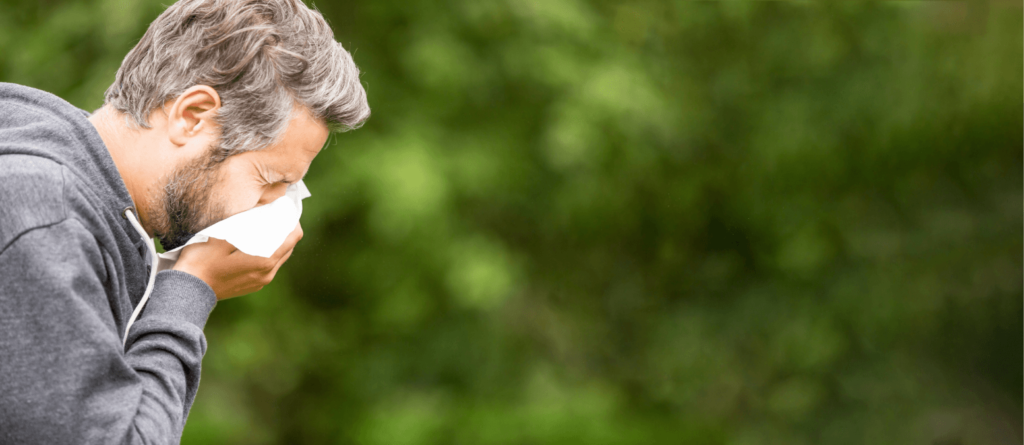1. Introduction to Fall Allergies
As the air cools and leaves change, new allergens appear, causing symptoms like sneezing, itchy eyes, and congestion for many people. Although spring allergies are more commonly known, fall allergies can be equally disruptive, affecting those sensitive to seasonal shifts. This article explores the causes, symptoms, and strategies for preventing and managing fall allergies.
2. Major Fall Allergy Triggers
Ragweed Pollen
Ragweed is a significant cause of fall allergies. Found throughout North America, this plant releases pollen from late August until the first frost, often affecting people living far from its source since pollen can travel hundreds of miles on the wind.
Mold
Mold spores are also a primary cause of fall allergies. Mold grows on decaying leaves, compost piles, and in damp, indoor areas like basements. As leaves fall and decompose, mold levels rise, spreading through the air and aggravating allergies.
Dust Mites
Dust mites thrive in warm, humid environments and tend to linger indoors in the fall. Turning on the heating system after summer can stir up dust mites and other particles, increasing allergy symptoms.
Pet Dander
As people spend more time indoors with pets during cooler weather, exposure to pet dander increases, potentially triggering symptoms in those allergic to animals.
3. Common Symptoms of Fall Allergies
Fall allergies can cause various symptoms that overlap with colds or other respiratory issues. Common symptoms include:
• Nasal Congestion and Runny Nose: Ragweed pollen and mold can cause a runny nose, sneezing, and congestion.
• Itchy, Watery Eyes: Allergic conjunctivitis is common with ragweed and mold allergies.
• Coughing and Wheezing: Indoor allergens like dust mites and pet dander may lead to coughing or respiratory issues.
• Skin Rashes or Hives: For some, mold exposure causes itchy skin or hives.
4. Prevention Strategies for Fall Allergies
Proactive measures can help reduce exposure to fall allergens:
• Monitor Pollen Counts: Check local pollen counts to avoid outdoor activities during high-ragweed days.
• Use High-Quality Air Filters: Install high-efficiency particulate air (HEPA) filters in your HVAC system to trap pollen, dust, and mold spores.
• Keep Windows Closed: Especially on windy days, keeping windows closed reduces exposure to outdoor allergens.
• Regular Cleaning: Dust and vacuum regularly, paying special attention to carpets, curtains, and other fabric surfaces that may harbor allergens.
• Wash Bedding and Clothes: Wash your clothes and linens in hot water to remove allergens.

5. Treatment Options
For those with persistent symptoms, several treatments can help manage fall allergies:
• Antihistamines: Over-the-counter antihistamines can relieve sneezing, itching, and runny nose.
• Nasal Steroid Sprays: These sprays reduce inflammation in the nasal passages and are effective for congestion.
• Decongestants: Decongestants provide temporary relief from nasal congestion but should not be used for extended periods.
• Immunotherapy: Allergy shots or sublingual tablets can help build long-term tolerance, especially for ragweed pollen.
• Eye Drops: For itchy eyes, antihistamine eye drops can provide relief.
6. Dietary and Lifestyle Tips
Healthy habits and a balanced diet can also help alleviate allergy symptoms:
• Anti-inflammatory Foods: Foods rich in antioxidants, such as berries and leafy greens, can reduce inflammation associated with allergies.
• Stay Hydrated: Drinking plenty of water thins mucus, which can ease congestion.
• Limit Alcohol and Caffeine: These can exacerbate congestion and dehydration.
• Indoor Workouts: Exercise is great for health, but consider indoor workouts on high-pollen days to avoid triggering symptoms.
• Avoid Cross-Reactive Foods: Certain foods, like melons and bananas, may worsen symptoms for ragweed allergy sufferers due to cross-reactivity.
7. Managing Fall Allergies for Different Age Groups
Children
• Medication Safety: Use age-appropriate antihistamines and consult a pediatrician for any persistent symptoms.
• Promote Good Hygiene: Encourage children to wash their hands frequently and avoid rubbing their eyes, which can transfer allergens.
Adults
• Effective Symptom Management: Antihistamines, nasal sprays, and decongestants may be combined for effective symptom relief, depending on severity.
• Healthy Indoor Environment: Reduce indoor allergens by regularly cleaning, dusting, and using an air purifier.
Seniors
• Monitor Medication Side Effects: Some seniors are more sensitive to certain medications, like antihistamines, which may cause drowsiness or dizziness.
• Indoor Air Quality: For those with limited mobility, using an air purifier and limiting outdoor exposure can help reduce allergy symptoms.
8. Conclusion
Fall allergies can be disruptive, but with a proactive approach, symptoms can be managed effectively. By understanding triggers and implementing preventative strategies, allergy sufferers can enjoy the season without the constant discomfort of allergic reactions. Through a combination of lifestyle adjustments, effective treatments, and dietary support, you can make fall allergies a manageable part of your seasonal routine.

























![[Cultivating Independence] The Rise of Domestic Lithium-Ion Battery Supply Chains in the U.S.](https://evergreenvitality.com/wp-content/uploads/2024/12/ev-battery-robots-factory-istock-1456466947-360x180.jpg)













![[Cultivating Independence] The Rise of Domestic Lithium-Ion Battery Supply Chains in the U.S.](https://evergreenvitality.com/wp-content/uploads/2024/12/ev-battery-robots-factory-istock-1456466947-120x86.jpg)


